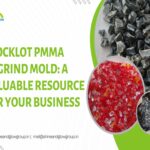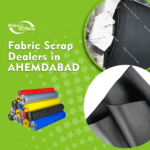In our daily lives, we encounter numerous products that play essential roles, yet their significance often goes unnoticed. One such unsung hero is absorbent paper, a versatile material with various applications across various industries. Let’s delve into the world of papers to uncover its uses, manufacturing process, and environmental impact.

Introduction
It is a type of material designed to soak up and retain liquids quickly. Its ability to absorb makes it indispensable in the healthcare and art and craft industries.
Types of Paper
This paper comes in various types, each tailored to specific needs. Industrial-grade variants are robust and efficient, while household varieties cater to everyday spills and messes. Specialty absorbent papers address niche requirements in sectors like scientific research.
Manufacturing Process
Crafting it involves a meticulous process. Raw materials, including wood pulp and recycled fibers, undergo advanced production techniques. Quality control measures ensure the final product meets stringent standards.
Applications
Medical Industry: This type of paper is a staple in the medical field, used in bandages, surgical dressings, and more. Its ability to absorb bodily fluids efficiently is crucial in healthcare settings.
Food and Beverage: In the food industry, it plays a vital role in preserving the freshness of products. It is commonly found in meat, fruits, and other perishables packaging.
Art and Craft: Artists and hobbyists appreciate this paper for its versatility. It’s a preferred choice for watercolor paintings, ensuring colors adhere well without bleeding.
Industrial Usage: Various industries utilize it for managing spills, controlling leaks, and maintaining a clean working environment.
Advantages
Environmental Benefits:
Numerous environmentally friendly materials enhance sustainability. Their biodegradability and recyclability reflect a conscientious selection.
Cost-Effectiveness: The cost-effectiveness of this paper, coupled with its efficiency, makes it a preferred option in various applications.
Customization Options: Manufacturers can customize absorbent materials to meet the specific demands of various industries, ensuring they align with diverse requirements.
Challenges and Innovations
While it offers numerous benefits, challenges such as sustainability issues persist. Ongoing research and innovations aim to address these concerns and improve the overall environmental impact.
How to Choose the Right Absorbent Paper
Selecting the appropriate paper involves considering factors such as absorbency levels, thickness, and intended use. Tailoring the choice to the application ensures optimal performance.
DIY Projects
Beyond its industrial applications, this paper finds a place in creative DIY projects and practical household hacks. From crafting unique artworks to solving everyday problems, its versatility knows no bounds.
Absorbent Paper in Daily Life
Beyond its apparent uses, it has unexplored applications in our daily lives. From innovative solutions to unexpected scenarios, its presence is more pervasive than we realize.
Future Trends
As technology advances, this paper is poised to undergo significant transformations. Emerging technologies and a growing market indicate a promising future for this unassuming material.
Case Studies of Absorbent paper
Real-world examples showcase the success of this paper in various industries. These case studies highlight its practicality and efficiency in solving real challenges.
Environmental Impact
The environmental impact of this paper is a critical consideration. Biodegradability and recycling possibilities contribute to its eco-friendly profile, aligning with the global push for sustainability.
Conclusion
In conclusion, this paper is a silent force that permeates multiple facets of our lives. Its porous qualities, from medical applications to artistic pursuits, make it an invaluable commodity. As we continue to explore its potential, the future looks promising for this unassuming yet essential material.
FAQs
Q1: What is absorbent paper?
It is a specialized material designed to quickly absorb and retain liquids, finding applications in various industries.
Q2: How is this paper made?
The manufacturing process involves using raw materials like wood pulp undergoing advanced production techniques with stringent quality control.
Q3: What are the key applications ?
This paper is widely used in the medical, food and beverage sectors, art and craft, and various industrial applications.
Q4: Is this paper eco-friendly?
Many absorbent papers are eco-friendly, with biodegradable and recyclable options contributing to sustainability efforts.
Q5: Can it be recycled?
Yes, it is often recyclable, adding to its environmental credentials.



